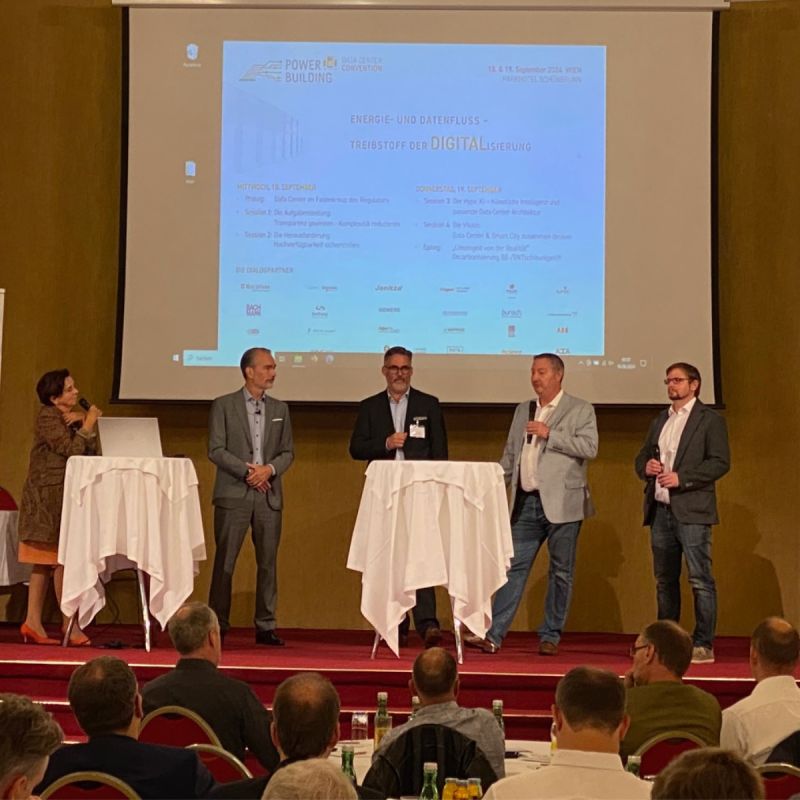Data Center Convention 2024 – Panel Discussion

On the 2nd day of the Power Building & Datacenter Convention on 19. September, Christoph Strohmayer participated in the panel discussion of “Do existing data centres have to capitulate before the AI boom, or is the ‘boom’ actually happening more in the edge?” Together with him on the panel were the hostess Krassimira Bojinowa, Martin Madlo, the managing director of Digital Realty Austria & Präsident of the Austrian Data Center Association, Thorsten Moßmann, the CTO of nexspace data centers GmbH and DI. Michael Schusser, from the management of Datacenter Infrastructure Services A1.
In the engaging discussion, several key developments and challenges emerged – we would like to share them with you:
Higher Rack Densities
In recent years, a clear trend has emerged: rack densities in data centres are continuously increasing, particularly due to artificial intelligence (AI). While air cooling was previously limited to around 20 kW per rack, new cooling technologies such as liquid cooling, direct cooling and immersion cooling now allow capacities of up to 60 and even 100 kW per rack.
Uncertain hyperscalers
It is interesting to note that the future of data centres, even in the next three to five years, is marked by significant uncertainties. Hyperscalers can only estimate the exact requirements of their customers and there is a lack of clear planning guidelines. Therefore, more flexible and volatile approaches must be adopted when designing data centres.
The PUE value (Power Usage Effectiveness) is perceived as both “a curse and a blessing”. Although it is considered an established Key Performance Indicator (KPI), it only provides limited clarity because many different parameters are behind this value, which can vary from one data centre to another.
Utilization of waste heat
A possible response to these uncertain conditions could be the planning of smaller data centre spaces with shorter time horizons. However, it is clear that the enormous waste heat generated by data centers must be utilized effectively for society in the future. Initial regulatory guidelines are already in planning. Energy supply companies will play a central role in feeding this waste heat into the district heating network. A clear political commitment and stronger collaboration between energy supply companies, data centre operators, chip manufacturers and software developers are needed. The wasting of heat must be avoided in urban and neighbourhood planning in the future.
Where are the potential for savings?
At the same time, power densities in data centres are increasing, making the available space for cooling units on rooftops an ever more limiting factor. The situation is further complicated by the large capacity reserves held by energy supply companies, which are kept available but not always utilized – creating a resource issue that leaves untapped potential.
As with all discussions surrounding sustainability, the question of savings potential arises here are well. When are certain software applications really needed? Could some applications possibly be shut down to enable meaningful load balancing? Given the rising demands and limited resources, such considerations could become crucial in the future.
The industry is currently marked by a lot of unpredictabilities and dynamics, as Krassimira Bojinowa notes. Christoph Strohmayer concludes by adding, “The new technologies aren’t really ‘new.’ They’ve existed for sometime, but the way they are integrated into data center planning will change.” He also adds that for network and storage components, area cooling will continue to play an important role for the foreseeable future.
